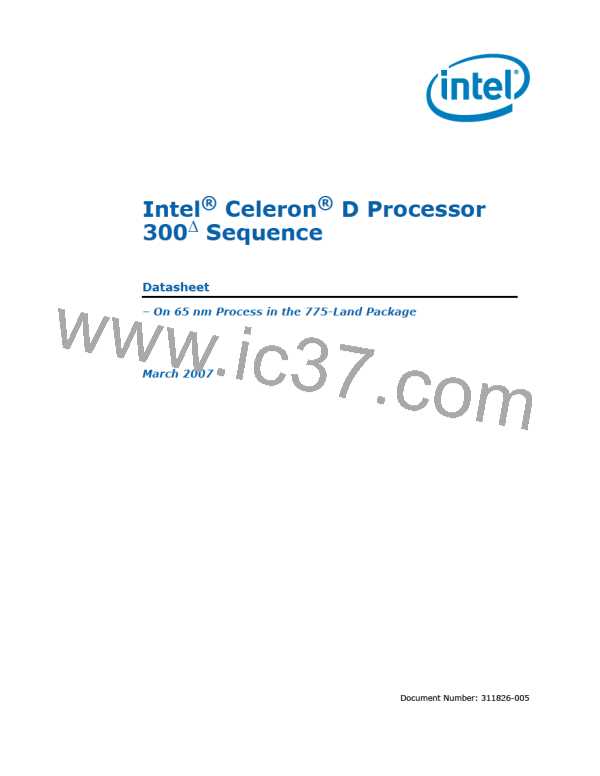Thermal Specifications and Design Considerations
periods of TCC activation is expected to be so minor that it would be immeasurable. An
under-designed thermal solution that is not able to prevent excessive activation of the
TCC in the anticipated ambient environment may cause a noticeable performance loss,
and in some cases may result in a TC that exceeds the specified maximum temperature
and may affect the long-term reliability of the processor. In addition, a thermal solution
that is significantly under-designed may not be capable of cooling the processor even
when the TCC is active continuously. Refer to the appropriate processor Thermal and
Mechanical Design Guidelines (see Section 1.2) for information on designing a thermal
solution.
The duty cycle for the TCC, when activated by the Thermal Monitor, is factory
configured and cannot be modified. The Thermal Monitor does not require any
additional hardware, software drivers, or interrupt handling routines.
5.2.2
On-Demand Mode
The Celeron D processor provides an auxiliary mechanism that allows system software
to force the processor to reduce its power consumption. This mechanism is referred to
as “On-Demand” mode and is distinct from the Thermal Monitor feature. On-Demand
mode is intended as a means to reduce system level power consumption. Systems
using the Celeron D processor must not rely on software usage of this mechanism to
limit the processor temperature.
If bit 4 of the ACPI P_CNT Control Register (located in the processor
IA32_THERM_CONTROL MSR) is written to a '1', the processor will immediately reduce
its power consumption via modulation (starting and stopping) of the internal core clock,
independent of the processor temperature. When using On-Demand mode, the duty
cycle of the clock modulation is programmable via bits 3:1 of the same ACPI P_CNT
Control Register. In On-Demand mode, the duty cycle can be programmed from 12.5%
on/87.5% off, to 87.5% on/12.5% off in 12.5% increments. On-Demand mode may be
used in conjunction with the Thermal Monitor. If the system tries to enable On-Demand
mode at the same time the TCC is engaged, the factory configured duty cycle of the
TCC will override the duty cycle selected by the On-Demand mode.
80
Datasheet

 INTEL [ INTEL ]
INTEL [ INTEL ]